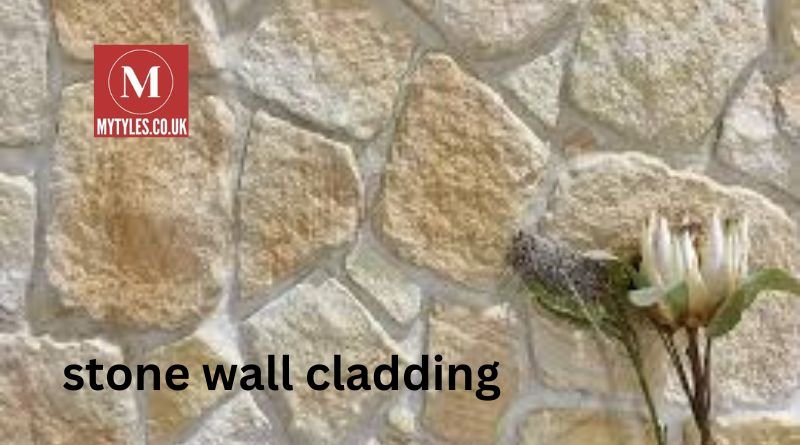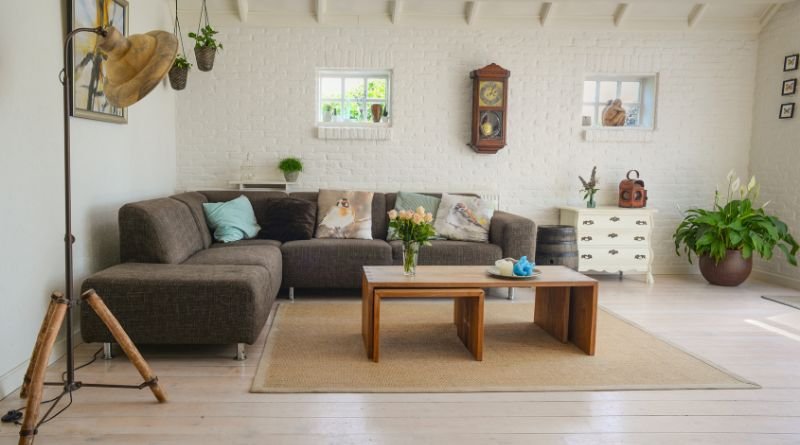Stone wall cladding has gained immense popularity in contemporary architecture and interior design. This aesthetic choice not only enhances the visual appeal of spaces but also provides functional benefits, including insulation and durability. In this article, we will explore the various aspects of stone wall cladding, including its types, benefits, installation methods, maintenance, and design ideas. Whether you are a homeowner looking to enhance your living space or a designer seeking inspiration, this comprehensive guide will provide you with valuable insights into the world of stone wall cladding.
Understanding Stone Wall Cladding
Stone wall cladding refers to the application of stone materials to the exterior or interior walls of buildings, effectively covering the underlying structure. It serves both decorative and protective functions, allowing designers to create visually striking surfaces while ensuring the longevity and resilience of the underlying walls. Cladding can be applied using various types of stone, including natural stones like granite, limestone, slate, and even manufactured stone products that mimic the look of natural stone.
The beauty of stone wall cladding lies in its versatility. It can be used in various architectural styles, from rustic to modern, and can be incorporated into different settings, including residential homes, commercial spaces, and outdoor environments. The natural variations in color, texture, and pattern found in stone contribute to the unique character of each application, making it a favored choice among architects and designers.
Types of Stone Wall Cladding
When it comes to stone wall cladding, several types are available, each offering distinct characteristics and benefits. Understanding these types can help you make informed decisions based on your aesthetic preferences, budget, and project requirements.
1. Natural Stone Cladding
Natural stone cladding is made from real stones harvested from quarries. This type of cladding offers unmatched beauty and authenticity. Popular options include:
- Granite: Known for its durability and resistance to weathering, granite cladding adds a luxurious touch to any space. It is available in a wide range of colors and finishes, making it adaptable to various design schemes.
- Limestone: This sedimentary rock is favored for its softness and warmth. Limestone cladding can create a rustic look, making it ideal for country-style homes and outdoor spaces.
- Slate: Renowned for its unique textures and rich colors, slate cladding can add depth and character to walls. It is particularly effective in contemporary designs, creating a striking contrast with modern materials.
- Sandstone: With its warm hues and natural grain, sandstone is an excellent choice for achieving a timeless, classic look. It works well in both indoor and outdoor applications.
2. Manufactured Stone Cladding
Manufactured stone cladding, also known as synthetic or engineered stone, is made from concrete and aggregates that mimic the appearance of natural stone. This option is often more cost-effective than natural stone and can be easier to install. The benefits include:
- Lightweight: Manufactured stone is significantly lighter than natural stone, making it easier to handle and reducing structural load concerns.
- Variety: Available in a wide range of colors and styles, manufactured stone cladding can replicate the look of various natural stones, offering design flexibility.
- Affordability: Typically less expensive than natural stone, manufactured stone can be a budget-friendly option for achieving the desired aesthetic.
Benefits of Stone Wall Cladding
The appeal of stone wall cladding goes beyond its visual charm. Here are several key benefits that make it a sought-after choice for many projects:
1. Aesthetic Appeal
One of the most significant advantages of stone wall cladding is its ability to enhance the beauty of any space. The natural variations in color, texture, and pattern create a unique appearance that can complement various design styles. Whether you aim for a rustic, traditional, or contemporary look, stone wall cladding can provide the perfect backdrop.
2. Durability and Longevity
Stone is inherently durable and weather-resistant, making it an ideal material for cladding. When properly installed, stone wall cladding can withstand harsh weather conditions, including rain, snow, and extreme temperatures. This longevity translates to lower maintenance and replacement costs over time.
3. Insulation Properties
Stone has natural thermal mass, which can contribute to improved energy efficiency in buildings. Stone wall cladding can help regulate indoor temperatures, reducing the need for excessive heating or cooling. This quality not only enhances comfort but also lowers energy bills, making it an environmentally friendly choice.
4. Low Maintenance
Unlike other materials that may require frequent upkeep, stone wall cladding demands minimal maintenance. Routine cleaning and occasional inspections are typically sufficient to keep the surface looking pristine. This aspect is particularly advantageous for busy homeowners and commercial property managers.
5. Versatility in Design
Stone wall cladding is incredibly versatile and can be used in various applications. It can be incorporated into both indoor and outdoor settings, enhancing living rooms, kitchens, fireplaces, patios, and building exteriors. Its adaptability allows designers to create stunning focal points or harmonious backdrops, depending on the desired effect.
Installation of Stone Wall Cladding
The installation process for stone wall cladding can be complex and should ideally be carried out by experienced professionals. Here is an overview of the steps involved in the installation:
1. Preparation
Before installation, the underlying surface must be prepared. This may involve cleaning, repairing, or reinforcing the wall to ensure it can support the weight of the stone cladding. Proper weatherproofing measures should also be taken to prevent moisture issues.
2. Layout and Design
Planning the layout is crucial for achieving a visually appealing result. Designers should consider the size, shape, and pattern of the stone pieces, ensuring they complement the overall design of the space. Mock-ups or drawings can help visualize the final appearance.
3. Adhesive Application
A suitable adhesive is applied to the back of the stone pieces or directly to the wall. The choice of adhesive depends on the type of stone being used and the specific requirements of the project. Following the manufacturer’s instructions is essential for ensuring a secure bond.
4. Placement of Stones
The stone pieces are then placed onto the prepared surface, starting from the bottom and working upwards. Spacing between the stones should be consistent to create a uniform look. Care should be taken to align the stones properly and minimize visible seams.
5. Grouting and Finishing Touches
Once the stones are in place, grout is applied to fill the joints between the stones. This step enhances the aesthetic appeal and helps secure the stones in position. After grouting, any excess material is cleaned off the surface, and the installation is left to cure as per the manufacturer’s recommendations.
Maintenance of Stone Wall Cladding
While stone wall cladding requires minimal maintenance, certain practices can help preserve its beauty and integrity over time. Here are some essential maintenance tips:
1. Regular Cleaning
Routine cleaning is crucial for removing dirt, dust, and debris from the stone surface. A soft-bristle brush or mild detergent mixed with water can be used to gently scrub the surface. Avoid using harsh chemicals that may damage the stone.
2. Inspect for Damage
Regular inspections can help identify any cracks or damage in the stone or grout. Addressing these issues promptly can prevent further deterioration and costly repairs.
3. Sealing
Some types of stone may benefit from periodic sealing to enhance their resistance to stains and moisture. Consult with a professional to determine if sealing is necessary for your specific stone cladding.
4. Addressing Moisture Issues
Proper drainage and ventilation are essential to prevent moisture buildup behind the stone wall cladding. Ensure that gutters, downspouts, and drainage systems are functioning correctly to direct water away from the building.
Design Ideas for Stone Wall Cladding
Stone wall cladding can be used creatively to achieve stunning designs. Here are some inspiring ideas for incorporating stone wall cladding into your spaces:
1. Feature Walls
Creating a feature wall with stone cladding can serve as a striking focal point in any room. Consider using bold colors or unique textures to make a statement. A stone fireplace accentuated with cladding can add warmth and character to a living area.
2. Outdoor Spaces
In outdoor settings, stone wall cladding can enhance patios, gardens, and walkways. Consider using natural stone for retaining walls or garden borders to create a seamless connection between the built environment and nature.
3. Rustic Farmhouse Aesthetic
For those drawn to a rustic farmhouse style, combining stone wall cladding with wooden accents can create a charming and inviting atmosphere. Pairing rough-hewn stone with reclaimed wood furniture can evoke a sense of warmth and authenticity.
4. Contemporary Minimalism
In modern designs, stone wall cladding can be used in a minimalist fashion. Opt for sleek lines and a monochromatic color palette to achieve a clean, sophisticated look. Combining stone with glass and metal can enhance the contemporary feel.
Conclusion
Stone wall cladding is a versatile and timeless choice for enhancing the aesthetic appeal and functionality of both interior and exterior spaces. With its wide variety of materials and designs, it caters to various tastes and styles, from rustic to modern. The durability and low maintenance requirements of stone cladding make it a practical investment for homeowners and designers alike.
As you embark on your journey to incorporate stone wall cladding into your space, consider the various types, benefits, and installation methods discussed in this article. With thoughtful planning and execution, you can create a stunning environment that showcases the natural beauty of stone while providing lasting value to your property. Whether you’re looking to create a serene retreat or a striking commercial space, stone wall cladding offers an elegant solution that will stand the test of time.
Read also: check




